
Kipling's Simla & "The Himalayas"
"Kangra Valley Motorcycle Tour"
Shimla (or Simla, as it was called by the British during the days of the Raj) once affectionately known as Chhota Vilayat or Little England, was, in Rudyard Kipling’s words,” a centre of power, as well as pleasure.” Kipling, who visited Shimla frequently in the 1880s, wrote of the intense flirtation, trysts, and debauchery for which it was infamous. Scores of young British girls, in search of husbands, turned up in Shimla ready to impress, only to find they had stiff competition from the “grass widows”, more experienced ladies in their 40s visiting without spouses, and often more popular with the bachelors.
Tour Summary
-
14 Days, 13 Nights
-
Distance: 2000 Km
-
Riding Days: 12
-
Level: Moderate
Tour Summary
-
14 Days, 13 Nights
-
Distance: 2000 Km
-
Riding Days: 12
-
Level: Moderate
"Kangra Valley Motorcycle Tour"
Shimla (or Simla, as it was called by the British during the days of the Raj) once affectionately known as Chhota Vilayat or Little England, was, in Rudyard Kipling’s words,” a centre of power, as well as pleasure.” Kipling, who visited Shimla frequently in the 1880s, wrote of the intense flirtation, trysts, and debauchery for which it was infamous. Scores of young British girls, in search of husbands, turned up in Shimla ready to impress, only to find they had stiff competition from the “grass widows”, more experienced ladies in their 40s visiting without spouses, and often more popular with the bachelors.
About Shimla & Kangra Valley
History
According to the Vedas, some non-Aryan tribes inhabited this region before the arrival of Aryans. There is a mention of the Trigarta (Kangra) kingdom in the epic Mahabharata. The reference to the prosperous Kingdom of Trigarta (Kangra) is also found in the Panani literature that was written sometime between the seventh and fourth centuries B.C. In 1009, Mahmud of Ghazni seized the fort of Kangra and plundered the Nagarkot shrine of an immense booty in gold, silver, and jewels. In 1556, Akbar launched an expedition into the hills, and occupied the fort of Kangra. in 1828, the once-powerful Kangra State came into the possession of the Sikhs. Kangra passed on to the British at the end of the first Sikh War in 1846.
In 1819 A.D. the then Assistant Political Agent of hill states Lt. Ross set up the first British residence in Shimla. Hindustan Tibet road was started in 1850-51, starting from Kalka and first lap was up to Shimla. In 1864 Shimla was declared as the summer capital of India.
Terrain
Kangra is one of the most picturesque low altitude valleys in the Himalayas. This is an extensive dun-type valley located between the Dhauladhar range in the North and the Shivalik hills in the South. Duns are longitudinal valleys formed as a result of folding when the Eurasian plate and Indian plate collided. They are formed between Lesser Himalayas and Shiwaliks. These valleys are deposited with coarse alluvium brought down by Himalayan rivers. The surface is covered with the richest cultivation, irrigated by the lovely streams which descend from perennial snows.
Roads
Himachal Pradesh State has a good road network. There are 9 National Highways with total length of 1,208 km, 19 State Highways with total length of 1,625 km and 45 Major District Roads with total length of 1753.05 km.

Climate
The elevation above the sea level of Kangra district is in the range of 427 to 6,401 meters. The climate of the district is pleasant around the year. Summers in Kangra starts to set in during the last week of March. The weather during this season is warm, but also pleasant during the day and cool during the night. This is the best time to indulge in adventure sports and go sightseeing, due to the favourable weather. With Buddha Purnima falling in the month of April, Kangra gives out festive vibes during the summer which is worth visiting for. The months from July until the end of September in Kangra, see heavy showers that make the region completely wet. Although the region is highly scenic during this time, one must be careful while traveling in the monsoons, due to slippery roads and landslides.
About Shimla & Kangra Valley

History
According to the Vedas, some non-Aryan tribes inhabited this region before the arrival of Aryans. There is a mention of the Trigarta (Kangra) kingdom in the epic Mahabharata. The reference to the prosperous Kingdom of Trigarta (Kangra) is also found in the Panani literature that was written sometime between the seventh and fourth centuries B.C. In 1009, Mahmud of Ghazni seized the fort of Kangra and plundered the Nagarkot shrine of an immense booty in gold, silver, and jewels. In 1556, Akbar launched an expedition into the hills, and occupied the fort of Kangra. in 1828, the once-powerful Kangra State came into the possession of the Sikhs. Kangra passed on to the British at the end of the first Sikh War in 1846.
In 1819 A.D. the then Assistant Political Agent of hill states Lt. Ross set up the first British residence in Shimla. Hindustan Tibet road was started in 1850-51, starting from Kalka and first lap was up to Shimla. In 1864 Shimla was declared as the summer capital of India.
Terrain
Kangra is one of the most picturesque low altitude valleys in the Himalayas. This is an extensive dun-type valley located between the Dhauladhar range in the North and the Shivalik hills in the South. Duns are longitudinal valleys formed as a result of folding when the Eurasian plate and Indian plate collided. They are formed between Lesser Himalayas and Shiwaliks. These valleys are deposited with coarse alluvium brought down by Himalayan rivers. The surface is covered with the richest cultivation, irrigated by the lovely streams which descend from perennial snows.


Roads
Himachal Pradesh State has a good road network. There are 9 National Highways with total length of 1,208 km, 19 State Highways with total length of 1,625 km and 45 Major District Roads with total length of 1753.05 km.
Climate
The elevation above the sea level of Kangra district is in the range of 427 to 6,401 meters. The climate of the district is pleasant around the year. Summers in Kangra starts to set in during the last week of March. The weather during this season is warm, but also pleasant during the day and cool during the night. This is the best time to indulge in adventure sports and go sightseeing, due to the favourable weather. With Buddha Purnima falling in the month of April, Kangra gives out festive vibes during the summer which is worth visiting for. The months from July until the end of September in Kangra, see heavy showers that make the region completely wet. Although the region is highly scenic during this time, one must be careful while traveling in the monsoons, due to slippery roads and landslides.

“You’re off to Great Places! Today is your day! Your mountain is waiting, So…get on your way!“
Dr. Seuss
Tour Itinerary

Steeped in history yet overflowing with modern life. Colourful, cacophonous Delhi pulsates with the relentless rhythms of humanity like few other cities on earth.

Ever since the Beatles visited the ashram of the Maharishi Mahesh Yogi in the late '60s, Rishikesh has been a magnet for spiritual seekers.

Nestled among the lofty mountain ranges of The Himalayas, the tiny, rustic hamlet is perched at an elevation of 8,500 feet above sea level.

Nestling among the Shivalik range overlooking lush green fields, dirt-free roads, and clean streets, this small hill station serves as an ideal holiday destination.

Strung out along a 12km ridge, with steep forested hillsides falling away in all directions, the Himachal capital is one of India's most popular hill resorts.
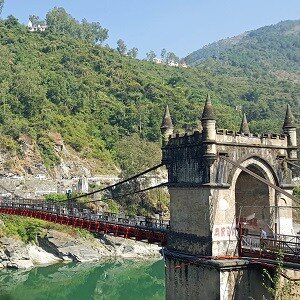
The town has mythological and historical significance and boasts of unique temple architecture. It is referred to as Chhota Kashi (Little Benaras)

Round trip to Parashar Lake located at a distance of 50 km from Mandi, at an altitude of 9000 feet, with breathtaking views of the Pir Panjal range.
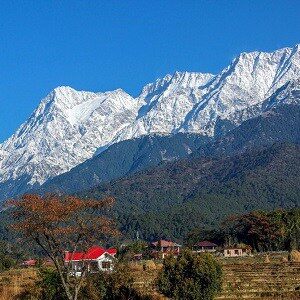
At the foot of the impressive Dhauladhar mountain range, Palampur is surrounded by tea plantations, rice fields, pine woods, and scenic mountain views.

McLeod Ganj is the residence of His Holiness the 14th Dalai Lama and home to a large Tibetan population, including many maroon-robed monks and nuns.

It was named after The Earl of Dalhousie, who was the British Governor-General in India while establishing this place as a summer retreat.

Home to the spectacular Golden Temple, Sikhism's holiest shrine and one of India’s most serene and humbling sights.
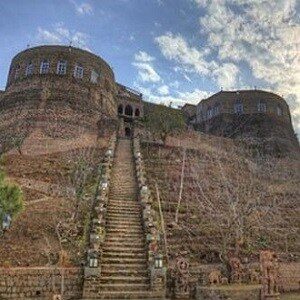
Penultimate stop at a hill-top fort resort before riding back to New Delhi.
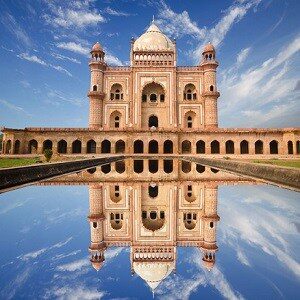
Steeped in history yet overflowing with modern life. Colourful, cacophonous Delhi pulsates with the relentless rhythms of humanity like few other cities on earth.
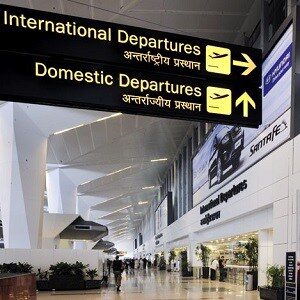
Back home safely after a fulfilling adventure.
Tour Information
- Guided tour as per itinerary.
- Experienced tour guides.
- Road maps and travel information.
- All hotel accommodation and meals.
- All transfers including Airport transfers, sightseeing spots and during the ride.
- All motorcycle hire charges for the guided tour duration.
- Fuel.
- Third party insurance for the motorcycles.
- All sightseeing spot entry tickets and guide charges (excluding camera charges).
- Road and bridge tolls.
- Skilled motorcycle mechanic.
- Support vehicle for carrying luggage, spares, medical kit and other essentials.
- Tour T-shirt and Hoodie.
- Goods and Services Tax.
- Adequate travel, medical and accidental insurance of the riders.
- Air travel and visas.
- Alcoholic and non-alcoholic beverages.
- Tips and laundry.
- Repair of damages to the motorcycle caused by the riders.
- Personal riding and safety gear.
- All telephone/mobile services.
- Anything not mentioned in the Inclusions section.
Signed copies of:
- Insurance & Medical Form
- Liability Waiver Form
Original and 2 photocopies each, of following:
- Driving License
- International Driving Permit
- Travel Insurance
- Passport
- Visa
Passport sized photographs (Four)
- Riding Jacket
- Riding Pants
- Motorcycle Boots
- Helmet : Full face (essential)
- Riding Gloves
- Kidney Belt
- Hydration Pack
- Water Resistant Backpack
- Goggles/Sunglasses
- Snood/Buff Scarf
Essentials:
- Sun Block
- Mosquito Repellent
- Hand Sanitizer
- Insulated Flask
- Lip Balm
- Sun Hat/Cap
- Personal Medication
- Basic First Aid Kit
Special Offers
We are offering limited period discounts. Contact us to find out if you are eligible.


